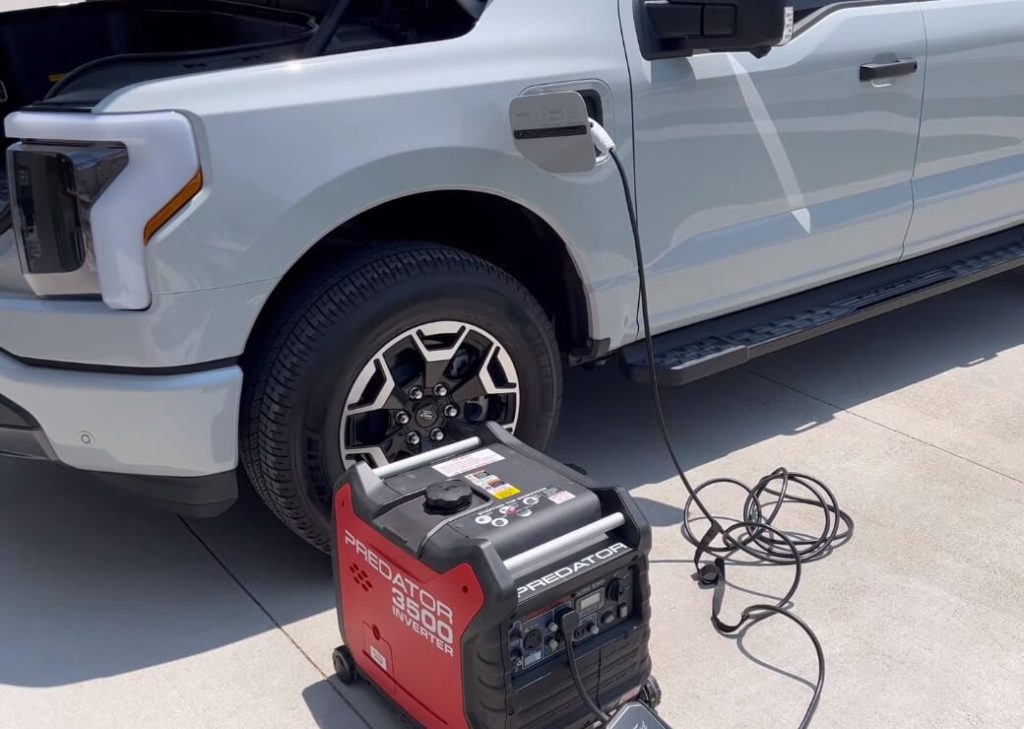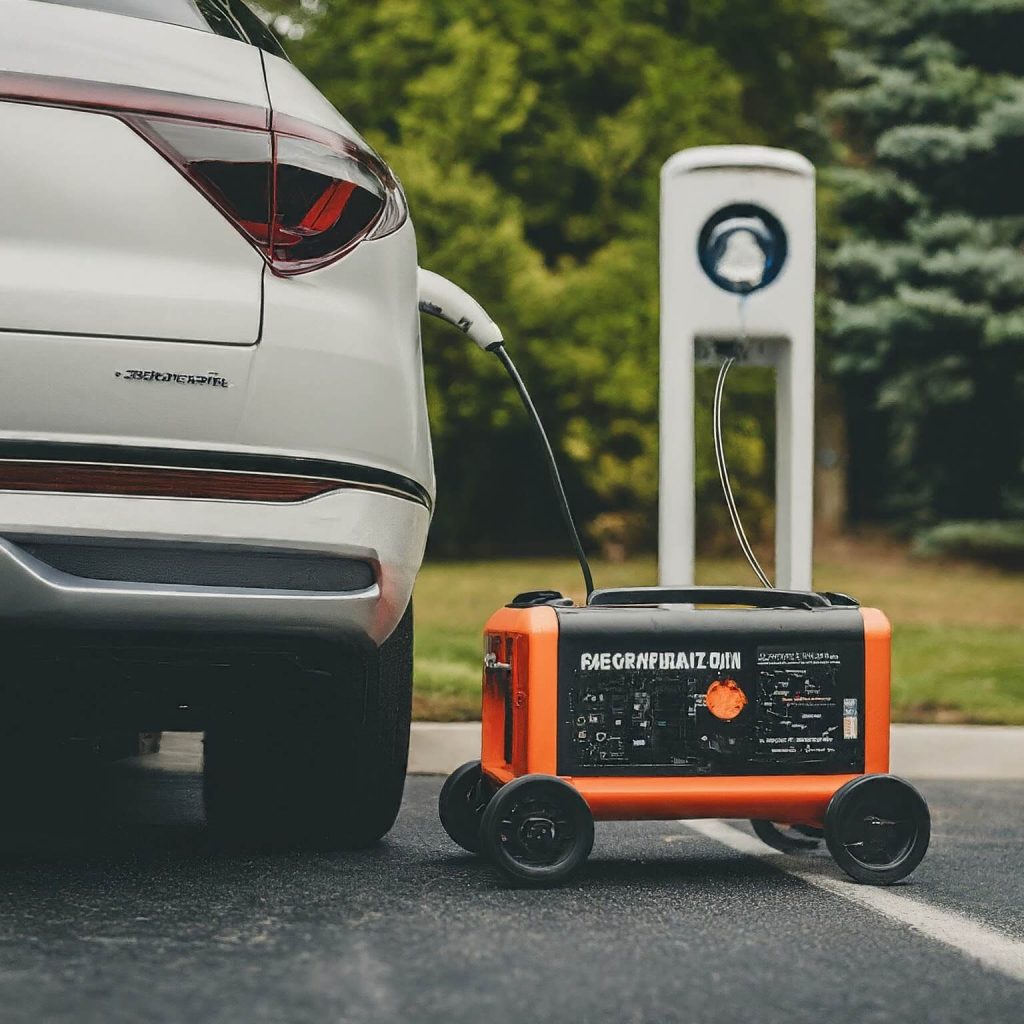In a pinch, a standard home outlet (120V) can provide Level 1 charging for your electric car. But for a faster and more practical solution, especially for Level 2 ‘fast’ charging, experts recommend a generator that produces a minimum of 10kW of backup power. This will get you back on the road in no time.

Electric vehicles (EVs) are gaining traction with their eco-friendly nature and impressive performance. But what happens when the power goes out and you need to recharge your car? While generators can provide a backup charging solution, selecting the right size is crucial for safe and efficient operation.

This article dives into the world of EV charging with generators, guiding you through the factors to consider and helping you pick the perfect fit for your needs.
Can You Really Charge an EV with a Generator?
Absolutely! Generators can be a viable option for charging your EV, especially during power outages or in remote locations without charging stations. Its limitations should known to us :
- Generator Capability: Most portable generators are designed for appliances and lights, not the high power demands of EV charging.
- Charging Speed: Generator-based charging is significantly slower than standard charging stations.
- Cost and Emissions: Running a generator for extended periods can be expensive and negate the eco-benefits of EVs.
Key Factors to Consider When Choosing a Generator for EV Charging
Before you hit the store, here are the critical aspects to ponder:
1. EV Battery Capacity: Larger batteries (common in long-range EVs) require more power to replenish. Consult your car’s manual for battery capacity (kWh).
2. Charging Level: There are three charging levels for EVs:
- Level 1 (120V): Slowest charging, typically found in standard household outlets (1.4-5.2 kW).
- Level 2 (240V): Faster charging, often installed in homes and public stations (6.6-19.2 kW).
- Level 3 DC Fast Charging (400V+): Not compatible with generators due to high voltage requirements.
3. Desired Charging Speed: How quickly do you need to recharge your car? Level 2 offers a good balance between speed and generator capacity.
4. Generator Wattage and Startup Surge:
- Wattage: This indicates the generator’s continuous power output. You’ll need a generator with a wattage rating exceeding the EV charger’s requirements (factor in a 20% buffer for safety).
- Startup Surge: EVs draw a higher initial current when charging begins. Ensure the generator’s surge capacity can handle this temporary spike.
5. Runtime and Fuel Efficiency: How long do you plan to charge for? Choose a generator with sufficient fuel capacity to match your charging duration. Remember, fuel efficiency diminishes under load, so factor that in.
Choosing the Right Generator Size for Your EV
Now comes the fun part – picking the perfect generator! Here’s a general guideline based on EV charging levels:
- Level 1 Charging: A portable generator with a continuous wattage rating of around 2,000 watts (with a surge capacity to handle the initial current) could suffice. However, charging times will be long (overnight or more).
- Level 2 Charging: This requires a more robust generator. Look for options with a continuous wattage rating of at least 7,000 watts (ideally 10,000 watts or more) and a surge capacity to match your EV charger. Remember, higher-wattage generators tend to be larger, heavier, and more expensive.
Pro Tip: Always consult your EV’s owner’s manual and a qualified electrician to determine the exact charging requirements and ensure safe generator operation.
Safety First: Important Considerations When Charging with a Generator
- Carbon Monoxide (CO) Poisoning: Generators emit CO, a deadly gas. Always remember not to run a generator inside of a house or in an enclosed area. Always operate it outdoors, far from windows and doors.
- Fuel Safety: Store fuel safely in a designated container, away from heat sources and open flames.
- Electrical Safety: Use a generator transfer switch to isolate the generator from the grid and prevent backfeeding, which can endanger utility workers.
- Grounding: Grounding is important for electrical shock prevention.
- Overloading: Avoid overloading the generator by exceeding its rated capacity. This can damage the generator and pose safety risks.
Eco-Friendly Alternatives to Generator Charging
While generators provide a backup solution, they’re not the most eco-friendly option. Here are some alternatives to consider:
- Solar Power: Invest in a solar panel system with battery storage to create a self-sufficient charging solution.
- Public Charging Stations: Locate public charging stations near you for emergencies.
- Portable EV Chargers: Consider a portable Level 2 EV charger that can be plugged into a standard outlet for slower charging during power outages.
By understanding your EV’s needs and considering these factors, you can choose the perfect generator for eco-conscious charging adventures!
Leave a Reply